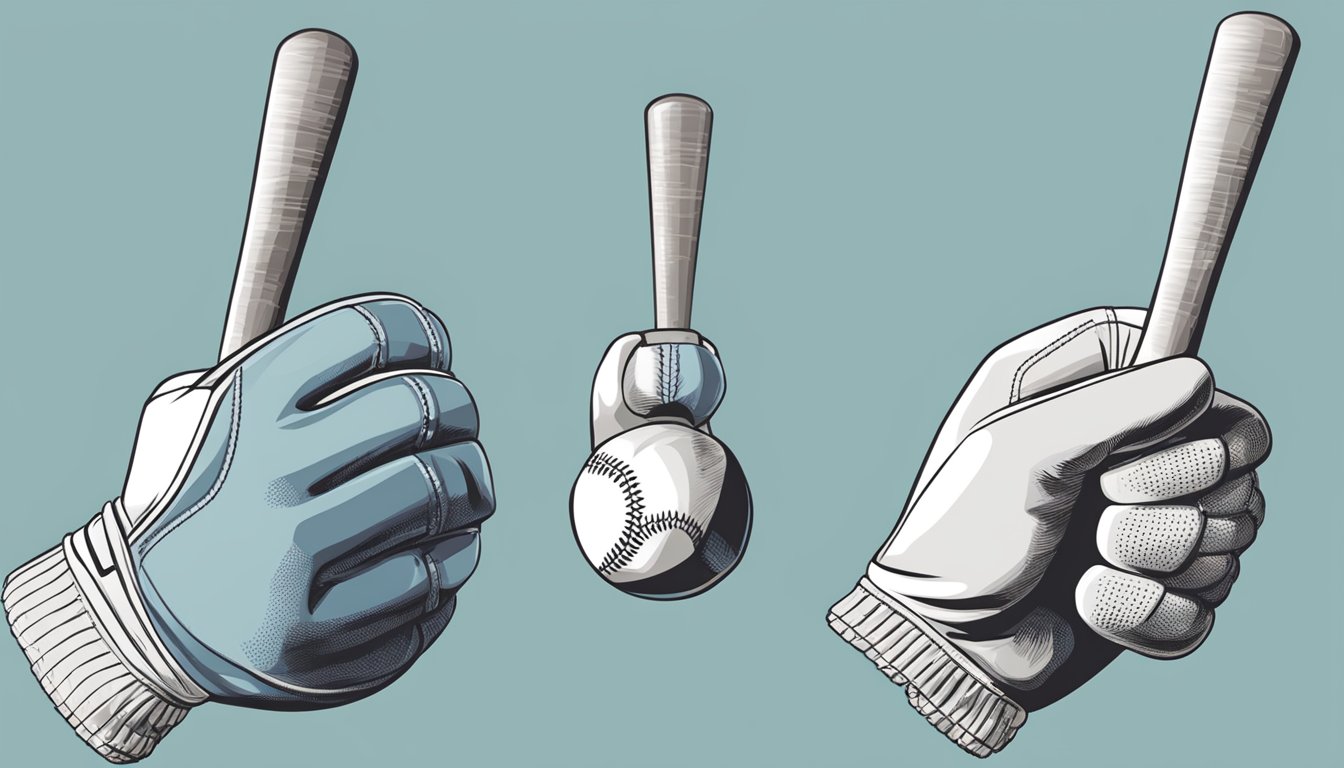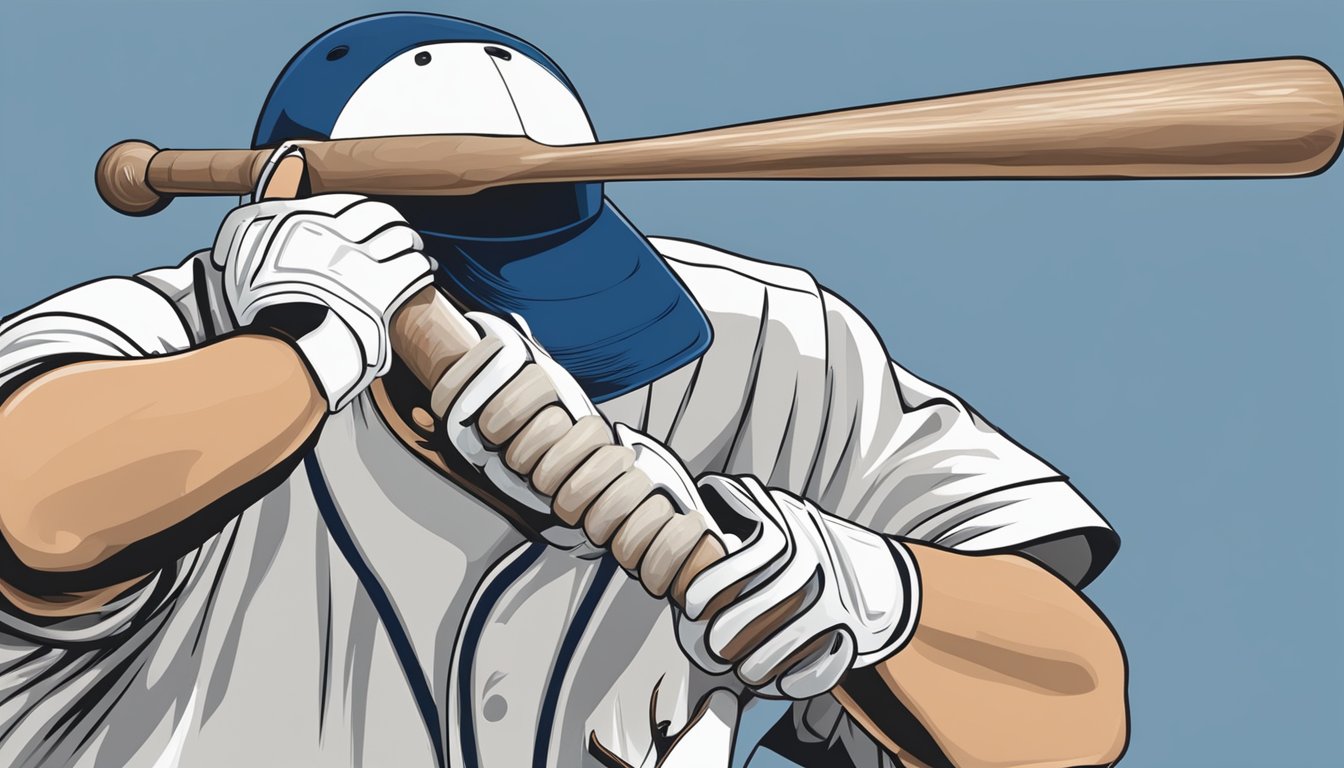Batting gloves are a common accessory for baseball and softball players, often considered an essential aspect of their equipment. They serve multiple functions: protecting the hands, improving grip, and potentially influencing swing mechanics. Players at all levels, from youth leagues to professional baseball, wear batting gloves to assist them in achieving a comfortable and effective swing. While their primary purpose is to protect the hands from blisters and absorb the shock from hitting the ball, batting gloves may also affect the way players grip and swing the bat, which can ultimately impact batting performance.
The swing mechanics in baseball and softball are intricate, involving a complex interplay of body movements. The grip on the bat is the foundation of a successful swing and batting gloves can enhance this grip, particularly in adverse weather conditions. Moreover, the materials and design of the gloves can provide better bat control, which is crucial for executing advanced hitting techniques. Players and coaches often debate the extent to which batting gloves can improve the physical aspects of a swing and whether they contribute to psychological confidence at the plate.
Key Takeaways
- Batting gloves can enhance grip and provide hand protection, impacting swing mechanics.
- Proper grip facilitated by batting gloves is crucial for executing advanced hitting techniques.
- Gloves may contribute to a batter’s psychological confidence, influencing their performance.
The Importance of Batting Gloves
https://www.youtube.com/watch?v=J_IJhVLmTEM&embed=true
Batting gloves play a crucial role in enhancing a player’s performance at the plate. They provide a better grip, reduce the risk of blisters, and can improve hitting mechanics.
Design and Materials
The design and materials of batting gloves are integral to their effectiveness. Manufacturers use a combination of leather or synthetic materials, which ensures durability and flexibility. Leather gloves typically offer a more natural feel, which can translate to better tactile feedback when holding a bat. Synthetic materials, on the other hand, are often lighter and can provide superior moisture control.
- Leather: Traditional, natural grip
- Synthetic: Modern, moisture-wicking
Fit and Comfort
Proper fit and comfort are essential for any batting glove to be effective. Gloves that are too loose can lead to slippage, while those that are too tight may restrict movement and blood circulation. Ideally, batting gloves should conform snugly to a batter’s hands, allowing for full range of motion without excess material bunching up, which could affect swing mechanics.
- Snug Fit: Enhances hand movements
- Proper Sizing: Prevents slippage and bunching
Impact on Grip Strength
A strong and stable grip is pivotal for controlling the bat during a swing. Batting gloves with textured palms can increase grip strength, which helps batters maintain control through high-velocity swings. Moreover, the additional padding often found in the palm area can also act as a shock absorber, reducing vibrations that can lead to hand fatigue.
- Textured Palms: Improves bat control
- Padding: Absorbs shock, reduces hand fatigue
When batters step into the box with well-designed batting gloves that fit correctly, they can experience an improved grip that enhances swing mechanics. The resulting confidence and comfort at the plate are invaluable to any player’s performance.
Fundamentals of Swing Mechanics
https://www.youtube.com/watch?v=duVELZtnLYM&embed=true
In the mechanics of a baseball swing, elements such as stance, balance, and bodily coordination come together to create the motion needed to hit the ball effectively.
Stance and Balance
The stance is the foundation of all swing mechanics. A hitter must adopt a stable and balanced position, with feet shoulder-width apart and knees slightly bent. Balance is crucial throughout the swing, as it allows the batter to maintain control and maximize power.
Hand Placement and Load
Hand placement determines the load phase, where the hitter prepares to swing. The hands should be held back and close to the body, providing leverage for a quicker and more controlled swing. Key to this is avoiding unnecessary movements that can disrupt the swing mechanics.
The Role of the Lower Body
The lower body initiates the swing with a rotational movement of the hips, which is a primary source of power. Proper rotation involves turning the back foot, knee, and hip in a syncopated movement that lays the groundwork for the upper body to follow through.
Swing Path and Upper Body Coordination
An optimal bat path is maintained by the coordination of the upper body, including the arms, shoulders, and torso. A compact swing with a slight upward angle maximizes the chances of making contact with the ball and driving it effectively.
Timing and Rhythm
Timing and rhythm are essential for synchronizing all elements of swing mechanics. The batter must anticipate the pitch and coordinate the motion of their swing to meet the ball precisely upon arrival, integrating the aspects of stance, load, and rotation into one fluid motion.
Advanced Hitting Techniques
https://www.youtube.com/watch?v=WwKjqJeHSHk&embed=true
Mastering advanced hitting techniques is essential for baseball players aiming to improve their batting performance. Precision in weight transfer, hip rotation, striding, pivoting, contact, and follow-through, coupled with repeated practice for muscle memory development, are the foundation of a powerful and effective swing.
Weight Transfer and Hip Rotation
The act of transferring weight from the back to the front leg is crucial for generating power. A batter should begin with the majority of their weight on the back leg and, as they initiate the swing, drive the weight forward. This movement should be synchronized with hip rotation, where the hips start to turn toward the pitcher. The correct sequence sees the weight shift, followed by the lower body turning, which then leads to the upper body rotating.
Striding and Pivoting
An effective stride is about proper timing and optimal length. As the pitch approaches, the batter lifts their front foot and strides smoothly towards the pitch, keeping their weight back. Once the front foot lands, the batter must pivot on the ball of the back foot, which unlocks the hips and allows for full rotation and torque generation.
Contact and Follow-Through
Making contact with the ball involves coordinating eye-hand movement to meet the ball squarely with the bat. The batter’s hands should be in a palm up, palm down position upon contact to ensure a strong bat position. Follow-through is equally vital—it should be a natural extension of the swing, with the hitter’s arms extended and the bat wrapping around the body. This helps maintain balance and power, allowing the hitter to drive the ball effectively.
Practices for Muscle Memory
Developing muscle memory for advanced hitting techniques involves:
- Repetitive Swing Practice: Performing numerous swings daily to ingrain the proper mechanics.
- Drills: Incorporating specific drills that focus on individual aspects of batting like weight transfer and hip rotation.
- Video Analysis: Reviewing footage of swinging to identify areas for improvement and ensure proper technique is consistently applied.
Engagement in consistent, focused training will automate the complex sequence of movements in a hitter’s swing, making advanced techniques second nature during play.
Physical and Psychological Effects
Batting gloves significantly influence both the physical and psychological aspects of a baseball player’s game, focusing on injury prevention, mental confidence, and the efficient use of energy and power in swing mechanics.
Injury Prevention and Longevity
Batting gloves play a crucial role in injury prevention by providing a protective layer that reduces friction and absorbs shock, thereby lessening the stress on a batter’s hands. This reduction in direct force helps to minimize the risk of blisters and calluses, which can affect grip and swing mechanics. Moreover, gloves improve torque and force distribution across the hands, which could help prevent more serious long-term issues such as tendonitis or nerve damage, ultimately contributing to a player’s career longevity.
Confidence and Mental Game
Confidence at the plate is vital. Batting gloves can help increase a hitter’s confidence by ensuring a consistent, secure grip, lessening worries about the bat slipping during a high-powered swing. The psychological comfort of increased grip can allow a batter to focus more on pitch selection and timing, rather than being preoccupied with maintaining hand contact with the bat.
Energy and Power Allocation
With a secure grip facilitated by batting gloves, a player can better allocate energy and power during a swing. Gloves improve the transfer of force from the hands to the bat, enhancing control and allowing for more efficient power distribution. This efficient allocation of power contributes to the optimization of swing mechanics, maximizing the force and speed at which a bat can be driven through the strike zone.
Training and Performance Enhancement
https://www.youtube.com/watch?v=qYyfGdm-YNc&embed=true
Batting gloves can significantly affect a player’s grip and swing stability, which has a direct correlation with hitting mechanics and overall performance. This enhancement comes with consistent practice and an effective training regimen that includes specific hitting drills, a focused routine, and constant analysis and adjustment of the swing.
Specific Hitting Drills
Proper drills are essential in enhancing a batter’s grip and swing mechanics. For instance, tee drills help in isolating the swing phase and promoting bat speed, while soft toss drills encourage proper timing and hand-eye coordination. A notable drill is the ‘bottom-hand tee drill’, which requires a batter to hit balls off a tee solely with their bottom hand, thereby strengthening wrist action and improving bat control.
Developing a Focused Routine
Athletes should build a routine that is both focused and tailored to their individual needs. This includes incorporating a mix of stretching exercises for flexibility, bat speed drills for power, and mental rehearsal to stay mentally sharp. A typical routine might begin with dynamic stretches, followed by a series of hitting drills, and concluded with cool-down stretches. Coaches play a critical role in ensuring that the routine aligns with the athletes’ strengths and areas for improvement.
Analyzing and Adjusting Swing
Performance enhancement involves constant analysis and adjustments. Athletes and their coaches should frequently review batting sessions to identify areas where batting gloves are either beneficial or may be impeding movement. This could involve adjusting the tightness of the gloves or experimenting with different materials and fits to optimize comfort and control. Technology such as high-speed cameras and bat sensors can provide real-time data on swing mechanics, which can then be used to make objective and precise adjustments.
Frequently Asked Questions
https://www.youtube.com/watch?v=Ia9S31KH9Lc&embed=true
Batting gloves are essential for many players to maintain a consistent and secure grip on the bat. The right pair can also influence swing mechanics and overall batting performance.
What role do batting gloves play in enhancing grip during a swing?
Batting gloves provide a tacky surface that ensures a firm grip on the bat, reducing the risk of slippage and allowing batters to swing with more force and accuracy.
How do different wrist cuff lengths on batting gloves affect bat control?
Wrist cuff lengths on batting gloves can influence the stability and flexibility of a player’s wrist movement. Shorter cuffs offer more range of motion, whereas longer cuffs provide greater support and control during the swing.
What are the benefits of using high-quality leather batting gloves for swing precision?
High-quality leather batting gloves typically offer a superior fit and more durability. This can translate to better bat control and more precise swings due to their consistent performance over time.
Can the fit and feel of batting gloves impact a batter’s swing technique?
Yes, the fit and feel of batting gloves can significantly impact swing technique. Gloves that are too tight may restrict movement, while those too loose might slide and disrupt the swing’s fluidity.
How does adjusting batting gloves affect a player’s focus and swing mechanics?
Adjusting batting gloves may help the batter maintain concentration and comfort at the plate. A secure fit ensures that the hands are set correctly on the bat, leading to improved swing mechanics.
What materials in batting gloves provide the best tackiness for a secure swing?
Materials like synthetic leather, genuine leather, and silicone can offer excellent tackiness for a secure grip. The choice of material often depends on personal preference and the level of stickiness desired.









